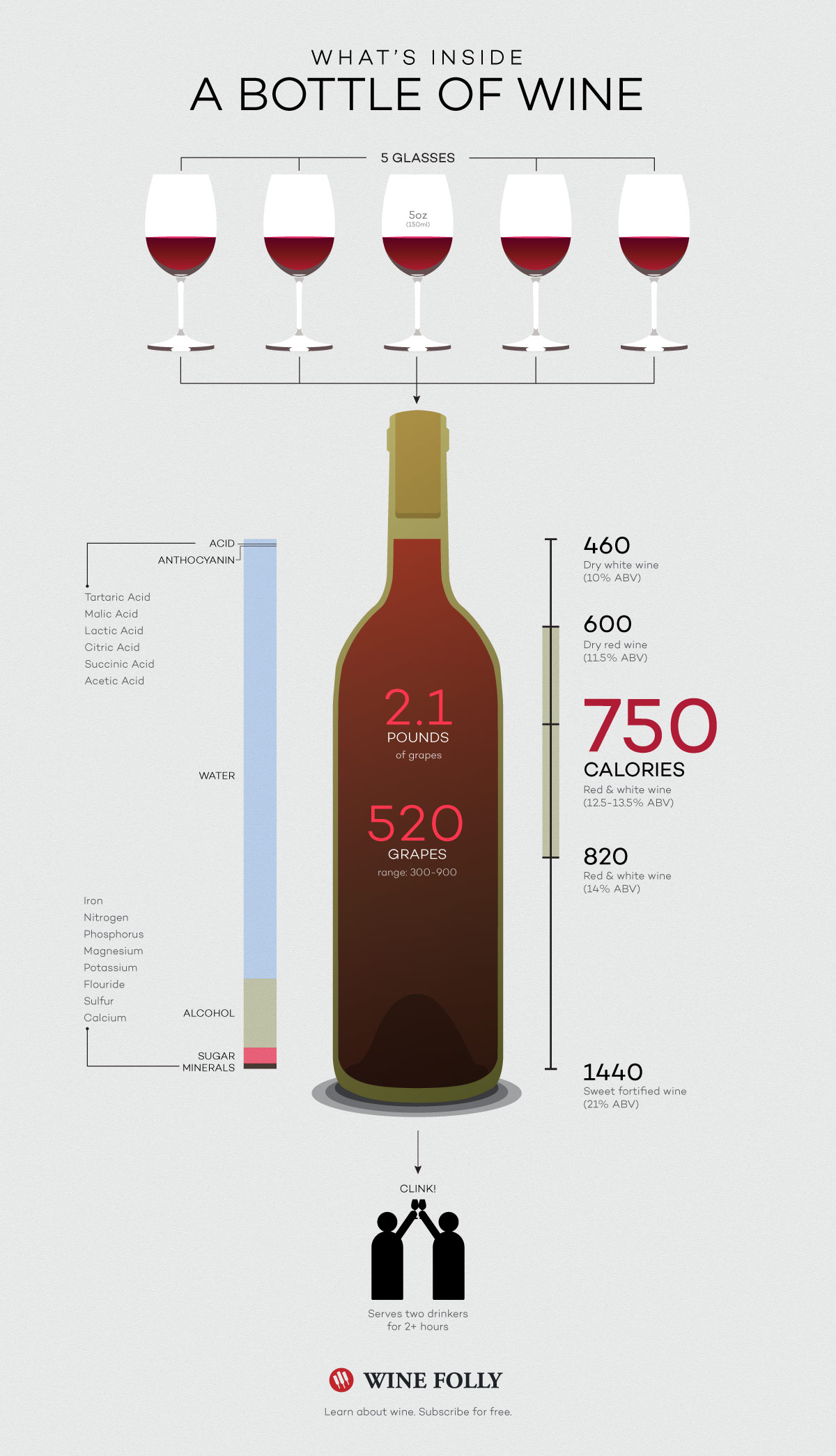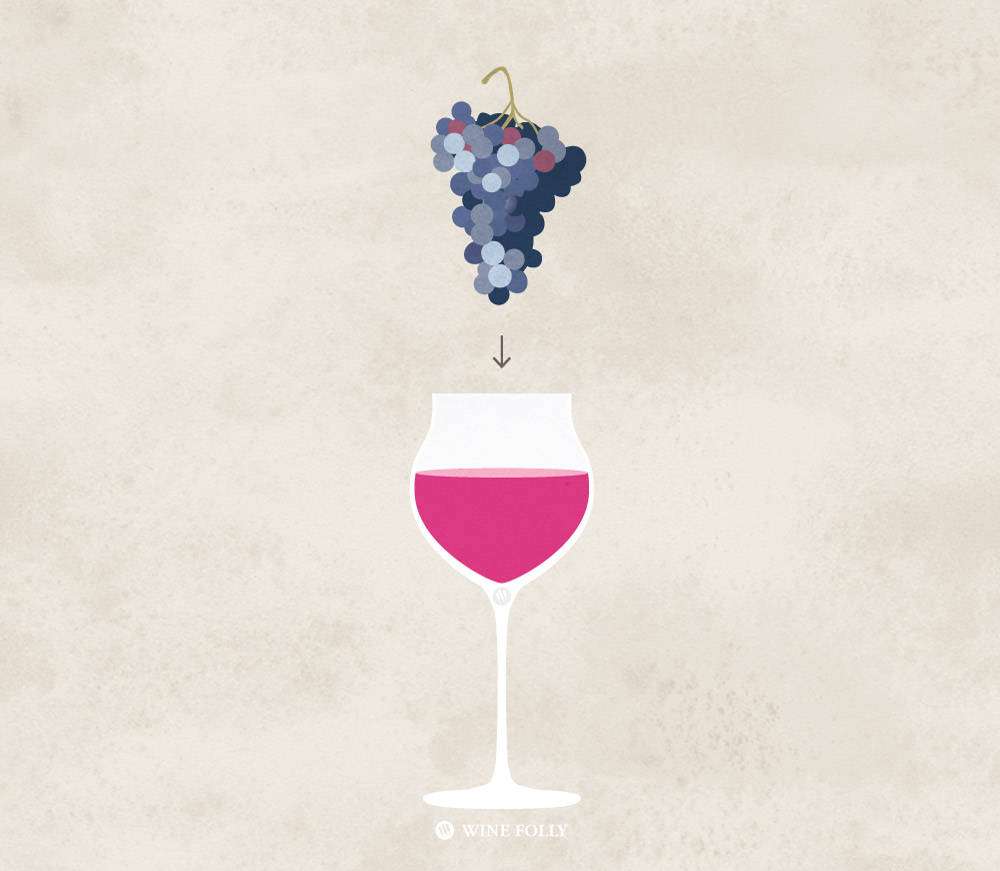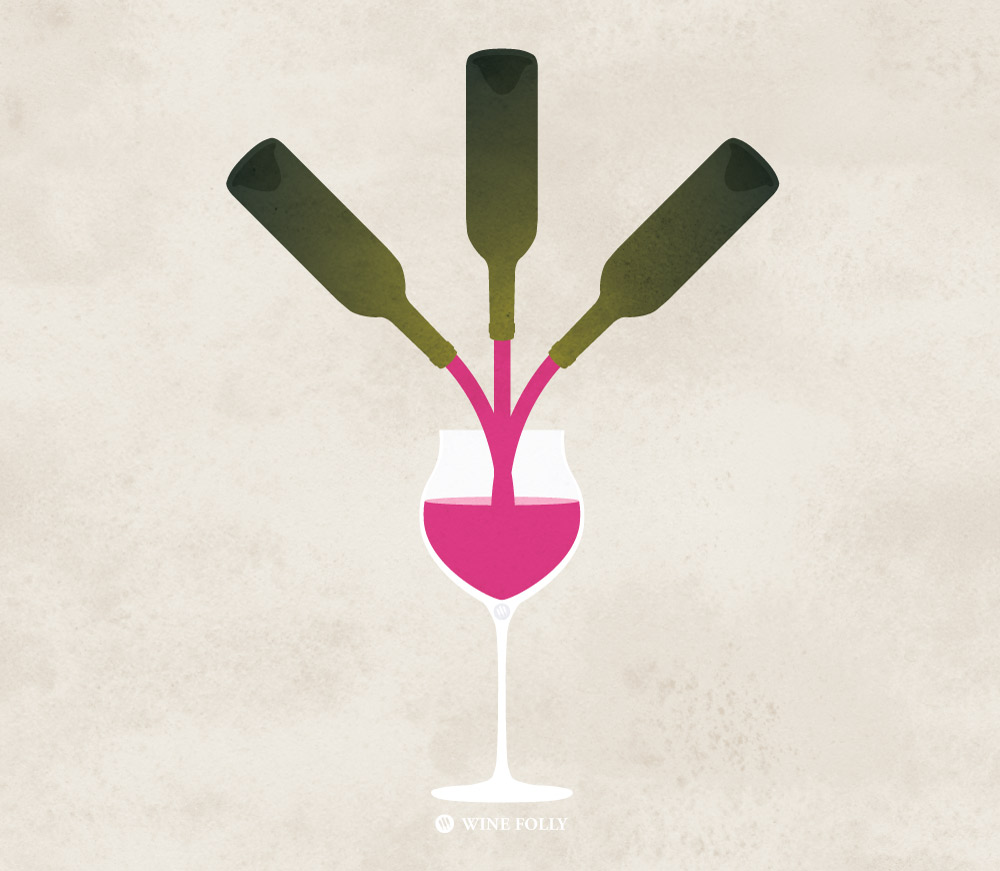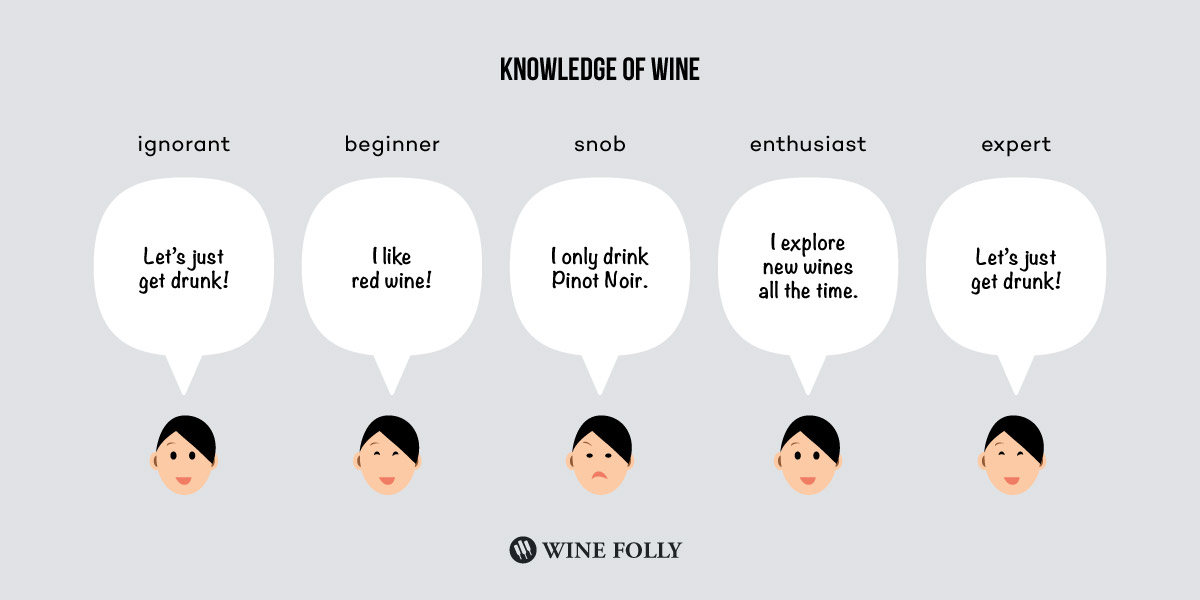What Is Wine?
Wine is an alcoholic beverage made with the fermented juice of grapes.
Technically, any fruit is capable of being used for wine (i.e., apples, cranberries, plums, etc.), but if it just says “wine” on the label, then it’s made with grapes. By the way, wine grapes are different than table grapes.
The difference between two popular drinks, wine and beer, is that brewing beer involves fermented grains. Simply, wine is made from fruit, and beer is made from grains. There are exceptions – that push the boundaries of beer – but that story is for another time.
Related Questions:
What Are Wine Grapes?
Wine grapes are different than table grapes: they are smaller, sweeter, and have lots of seeds. Most wines originate from a single species of vine that originated in the Caucasus called Vitis vinifera.
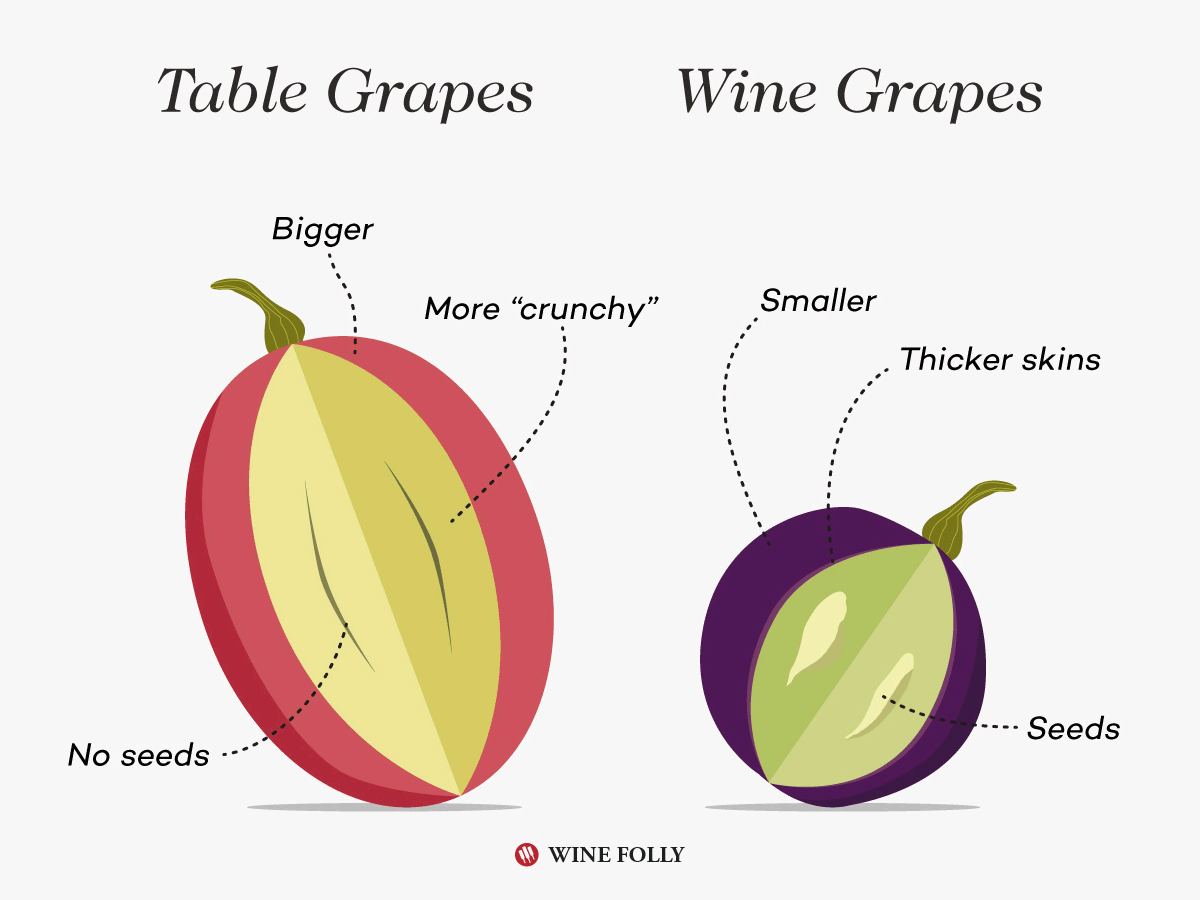
There are thousands of different varieties within the Vitis vinifera species – the most common is Cabernet Sauvignon.
The Origin of the term “Vintage”
Wine grapes take an entire season to ripen; thus, wine production happens just once a year. Hence, the origin of the term vintage. Vint stands for “winemaking” and age for the year it was made.
When you see a vintage year on the label, that’s the year the grapes were picked and made into wine. The harvest season in the northern hemisphere (Europe, US) is from August to September, and the harvest season in the southern hemisphere (Argentina, Australia) is from February to April.
Non-Vintage (NV) Wine
Occasionally, you’ll find a wine without a vintage listed on the label. Typically, this is a blend of several vintages together; and in the case of Champagne, it will say “NV” which stands for “Non-Vintage.”
Single-Varietal Wine
A single-varietal wine is made primarily with one type of grape. It’s common to see the name of that grape variety on the wine’s label. For example, a bottle of Riesling is made with Riesling grapes. It’s useful to note that each country has different rules for how much of the variety should be included to be labeled as a varietal wine.
- 75% USA*
- 85% Most winemaking countries, including EU (Italy, France, Germany, Austria, Portugal, Spain, and Greece), New Zealand, Australia, Chile, Argentina, and South Africa.
*Oregon requires 90% of the variety
Wine Blend
A wine blend is a wine made with a blend of several grape varieties.
Blending is a traditional winemaking method, and today several famous wine blends come from classic winemaking regions. Most wine blends are mixed after the fermentation (and aging) is complete. It is called a field blend when grapes are blended and fermented together. A famous example of a field blend is Port wine.
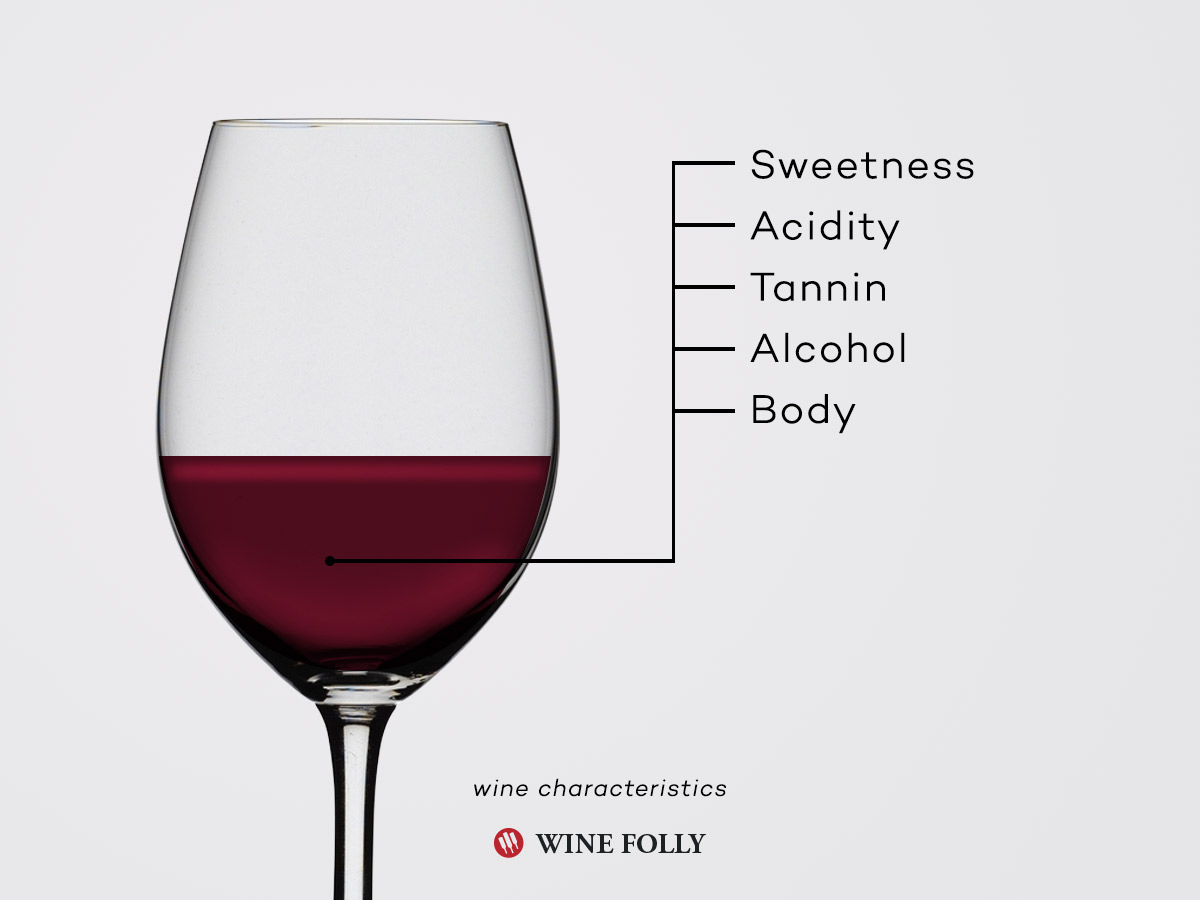
The Taste of Wine
Several facets explain wine’s unique flavor: acidity, sweetness, alcohol, tannin, and aroma compounds that are produced in fermentation.
Acidity: Wine as a beverage lies on the acidic end of the pH scale, ranging from as low as 2.5 (lemon) to as high as 4.5 (greek yogurt). Wine tastes tart.
Sweetness: Depending on what style of wine you drink, sweetness in wine ranges from having no sugar to sweet like maple syrup. The term “dry” refers to a bottle of wine without sweetness.
See the wine sweetness chart.
Alcohol: The taste of alcohol is spicy, palate-coating, and warms the back of your throat. Wine’s average range of alcohol is about 10% ABV (alcohol by volume) to 15% ABV. Of course, there are a few exceptions: Moscato d’Asti is as low as 5.5% ABV, and Port is fortified with neutral brandy upping it to 20% ABV.
Look at a chart of the alcohol levels in wine.
Tannin: Tannin is in red wines and contributes to the astringent quality of red wine. Put a wet, black tea bag on your tongue for a great example of how tannin tastes.
Read more about tannin in wine.
Aroma Compounds: Within the tiny minutia of wine (the phenols, esters, higher alcohols, acids, etc.), you’ll find the complexities of the wine’s flavors and aroma. Each grape variety exhibits aroma compounds at different levels. This is why some wines smell like berries and others smell like flowers. Another contributing factor to wine’s aromas is aging. Nearly all red wines are aged in oak, which contributes an oak barrel’s flavor compounds (like vanilla) and acts as a conduit to expose the wine to oxygen. Oxidation and aging produce a range of unique flavors in wine, including nuttiness and dried fruit/flower flavors.
Find out where wine aromas come from.
Conclusion
Wine is a seemingly simple beverage that becomes more complex the more you study it. The good thing is, it doesn’t matter how much you know, nearly everyone can appreciate wine. In short, wine is good.
